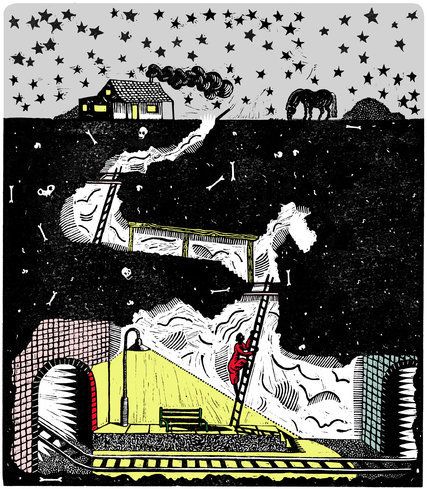I begin this review with two very important points. First, Colson Whitehead is an excellent writer. His novel, The Underground Railroad (New York: Doubleday, 2016) is always engaging and moves at a rapid pace. It won the 2016 National Book Award for fiction and was an Oprah Winfrey book club selection.
Second, despite its title, the novel is not about the Underground Railroad. At first I was reading the book as an historian. I found myself constantly correcting Whitehead in my head until I accepted that he was not really concerned with how historians understand and explain the past. The Underground Railroad, in the novel an actual railroad that runs under ground, even slavery, were metaphors used to explore racism in the United States, the condition of Black life, people’s hopes, and people’s struggles, in the past and present. At a time when police violence against Black men seems to be almost a daily occurrence, this book is a statement that Black Lives Matter.
On the Randall planation in Georgia enslaved Caesar has an illicit copy of Gulliver’s Travels that he reads a few pages at a time to keep his mind free. He imagines his effort to escape enslavement, all life, is like Gulliver’s effort to survive and return home. It is Caesar who convinces Cora to join him in a mad dash threw the swamps to a stationhouse where they can find a railroad station.
Gradually I started to view the book as a sort of contemporary Wizard of Oz story, to see Cora as a self-emancipated Black Dorothy on an impossible trip taken in horrendous times, then I could join Whitehead and Cora on the fictional Underground Railroad in her search for freedom. Ridgeway, the slavecatcher, is Cora and Whitehead’s Wicked Witch of the West. The friends and helpers she meets along the way, Black and White, have some parallels with characters from the Oz tale, although in the Whitehead’s imagined slave South, in a book written for a contemporary audience, most end up suffering horrible deaths.
Frederick Douglass makes an appearance in the novel as Elijah Lander, the son of a White father and Black mother from Boston, who travels the nation risking his life to speak out against slavery. Eugene Wheeler is a William Lloyd Garrison like character, although this time he is an abolitionist lawyer in New York City. Mingo is the accommodationist Booker T. Washington and also the Cowardly Lion, John Valentine is the flawed Wizard of Oz, Valentine Farm is a failed Emerald City that could not survive the power of White racism.
During her escape from slavery Cora meets Royal, a combination Straw Man / Tin Man and male Harriet Tubman who becomes her rescuer and lover. It is Royal who explains how the Underground Railroad works to Cora and readers. “The underground railroad is bigger than its operators – it’s all of you, too. The small spurs, the big trunk lines. We have the newest locomotives and the obsolete engines, and we have handcars like that one. It goes everywhere, to places we know and those we don’t” (267).
Whitehead’s Underground Railroad is the struggle for human dignity, the struggle for social justice; we are all part of that struggle on the Underground Railroad. I strongly recommend the book.
I recently saw the newly released The Birth of the Nation. I made a decision to see the movie despite the controversy surrounding its director and star because I felt an obligation to consider how I could use clips from the movie in classrooms to help students better understand slavery in the United States. I thought it was a beautifully filmed and emotionally powerful movie, but I could not identify useful scenes to show in a high school or college class. I believe the best movie depiction of slavery in the United States continues to be the original Gordon Parks version of Solomon Northup’s story, Solomon Northup’s Odyssey (1984). Parks’ movie (later released as Half Slave, Half Free), and Northup’s book, Twelve Years a Slave, includes a focus on work and community and not just the horror of enslavement. Unlike Nat Turner’s, whose life and rebellion against slavery were filtered by a White lawyer who published Turner’s “confession,” Solomon Northup’s story is his own.
Follow Alan Singer on Twitter: https://twitter.com/ReecesPieces8

NY Times
